#Colombian Regional
Explore tagged Tumblr posts
Text
MALUMA DROPS NEW SINGLE “CONTRATO” WITH DAZZLING MUSIC VIDEO SHOT IN LAS VEGAS

Latin music superstar Maluma surprises his fans once again by releasing his new single “Contrato.” Making the announcement from Paris, where he is actively participating in the city’s Fashion Week, he presents the new song, which promises to be another resounding hit in the prolific career of the singer.
"Contrato” stands out for its catchy pop and urban and cumbia fusion. The lyrics tell the romantic story of a love that wasn't meant to be. This release is accompanied by a spectacular music video shot in the vibrant city of Las Vegas, capturing this iconic destination’s glamour and essence.
The “Contrato” video was directed by the talented Nuno Gómez and Tés, who have captured Maluma’s artistic vision with a striking visual narrative. The impressive shots and captivating storytelling take the viewer on a journey through the opulence and mystery of Las Vegas, highlighting the creativity and talent of the entire team behind this production.
“I’m really excited to share ‘Contrato’ with all my fans. It was an incredible experience working with Nuno Gómez and Tés in Las Vegas, a city that has always inspired me. The video reflects that energy, and I hope everyone enjoys it as much as I do,” says Maluma about the single.

With “Contrato,” Maluma marks a new milestone in his career, further solidifying his position as one of the most influential and versatile artists in contemporary Latin music. His followers can expect an unprecedented audiovisual experience that reaffirms the artist’s commitment to innovation and quality in each project.
The single “Contrato” is now available on all digital platforms, and the official video can be found on Maluma’s YouTube channel .
youtube
#maluma#contrato#colombia#colombian singer#colombian artist#reggaeton#regional music#spanish#j balvin#ozuna#spotify#youtube#music#artist#musician#soundcloud#culture#rapper#art#rap#Spotify#Youtube
5 notes
·
View notes
Text
Hoy sé que por dinero te entregas a otro hombre dejándome a mí.
Abandonado.
En esta soledad.
3 notes
·
View notes
Text
Colombia`s Magic: Explore 10 Captivating Destinations That Will Enchant You
#Amazon Rainforest exploration#best places in Colombia#Bogotá travel tips#Cartagena highlights#Coffee Region tours#Colombia adventure travel#Colombia hidden gems#Colombia travel guide#Colombia vacation ideas#Colombian culture#explore Colombia#Guatapé travel#Medellín attractions#Popayán cultural sites#Providencia island#San Andrés tourism#Tayrona National Park#top destinations in Colombia#Villa de Leyva#visiting Colombia
0 notes
Text
"In response to last year’s record-breaking heat due to El Niño and impacts from climate change, Indigenous Zenù farmers in Colombia are trying to revive the cultivation of traditional climate-resilient seeds and agroecology systems.
One traditional farming system combines farming with fishing: locals fish during the rainy season when water levels are high, and farm during the dry season on the fertile soils left by the receding water.
Locals and ecologists say conflicts over land with surrounding plantation owners, cattle ranchers and mines are also worsening the impacts of the climate crisis.
To protect their land, the Zenù reserve, which is today surrounded by monoculture plantations, was in 2005 declared the first Colombian territory free from GMOs.
...
In the Zenù reserve, issues with the weather, climate or soil are spread by word of mouth between farmers, or on La Positiva 103.0, a community agroecology radio station. And what’s been on every farmer’s mind is last year’s record-breaking heat and droughts. Both of these were charged by the twin impacts of climate change and a newly developing El Niño, a naturally occurring warmer period that last occurred here in 2016, say climate scientists.
Experts from Colombia’s Institute of Hydrology, Meteorology and Environmental Studies say the impacts of El Niño will be felt in Colombia until April 2024, adding to farmers’ concerns. Other scientists forecast June to August may be even hotter than 2023, and the next five years could be the hottest on record. On Jan. 24, President Gustavo Petro said he will declare wildfires a natural disaster, following an increase in forest fires that scientists attribute to the effects of El Niño.
In the face of these changes, Zenù farmers are trying to revive traditional agricultural practices like ancestral seed conservation and a unique agroecology system.
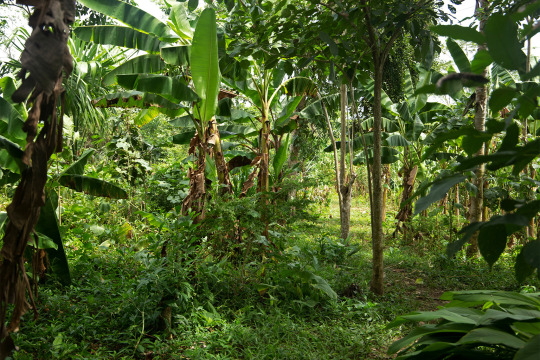
Pictured: Remberto Gil’s house is surrounded by an agroforestry system where turkeys and other animals graze under fruit trees such as maracuyá (Passiflora edulis), papaya (Carica papaya) and banana (Musa acuminata colla). Medicinal herbs like toronjil (Melissa officinalis) and tres bolas (Leonotis nepetifolia), and bushes like ají (Capsicum baccatum), yam and frijol diablito (beans) are part of the undergrowth. Image by Monica Pelliccia for Mongabay.
“Climate change is scary due to the possibility of food scarcity,” says Rodrigo Hernandez, a local authority with the Santa Isabel community. “Our ancestral seeds offer a solution as more resistant to climate change.”
Based on their experience, farmers say their ancestral seed varieties are more resistant to high temperatures compared to the imported varieties and cultivars they currently use. These ancestral varieties have adapted to the region’s ecosystem and require less water, they tell Mongabay. According to a report by local organization Grupo Semillas and development foundation SWISSAID, indigenous corn varieties like blaquito are more resistant to the heat, cariaco tolerates drought easily, and negrito is very resistant to high temperatures.
The Zenù diet still incorporates the traditional diversity of seeds, plant varieties and animals they consume, though they too are threatened by climate change: from fish recipes made from bocachico (Prochilodus magdalenae), and reptiles like the babilla or spectacled caiman (Caiman crocodilus), to different corn varieties to prepare arepas (cornmeal cakes), liquor, cheeses and soups.
“The most important challenge we have now is to save ancient species and involve new generations in ancestral practice,” says Sonia Rocha Marquez, a professor of social sciences at Sinù University in the city of Montería.
...[Despite] land scarcity, Negrete says communities are developing important projects to protect their traditional food systems. Farmers and seed custodians, like Gil, are working with the Association of Organic Agriculture and Livestock Producers (ASPROAL) and their Communitarian Seed House (Casa Comunitaria de Semillas Criollas y Nativas)...
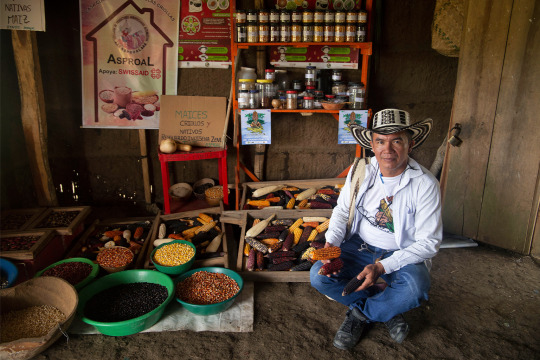
Pictured: Remberto Gil is a seed guardian and farmer who works at the Communitarian Seed House, where the ASPROL association stores 32 seeds of rare or almost extinct species. Image by Monica Pelliccia for Mongabay.
Located near Gil’s house, the seed bank hosts a rainbow of 12 corn varieties, from glistening black to blue to light pink to purple and even white. There are also jars of seeds for local varieties of beans, eggplants, pumpkins and aromatic herbs, some stored in refrigerators. All are ancient varieties shared between local families.
Outside the seed bank is a terrace where chickens and turkeys graze under an agroforestry system for farmers to emulate: local varieties of passion fruit, papaya and banana trees grow above bushes of ají peppers and beans. Traditional medicinal herbs like toronjil or lemon balm (Melissa officinalis) form part of the undergrowth.
Today, 25 families are involved in sharing, storing and commercializing the seeds of 32 rare or almost-extinct varieties.
“When I was a kid, my father brought me to the farm to participate in recovering the land,” says Nilvadys Arrieta, 56, a farmer member of ASPROAL. “Now, I still act with the same collective thinking that moves what we are doing.”
“Working together helps us to save, share more seeds, and sell at fair price [while] avoiding intermediaries and increasing families’ incomes,” Gil says. “Last year, we sold 8 million seeds to organic restaurants in Bogotà and Medellín.”
So far, the 80% of the farmers families living in the Zenù reserve participate in both the agroecology and seed revival projects, he adds."
-via Mongabay, February 6, 2024
#indigenous#ecology#agroforestry#agriculture#traditional food systems#traditional medicine#sustainable agriculture#zenu#indigenous peoples#farming#colombia#indigenous land#traditional knowledge#seeds#corn#sustainability#botany#plant biology#good news#hope#climate action#climate change#climate resilience#agroecology#food sovereignty
1K notes
·
View notes
Text

Despite its green image, Ireland has surprisingly little forest. [...] [M]ore than 80% of the island of Ireland was [once] covered in trees. [...] [O]f that 11% of the Republic of Ireland that is [now] forested, the vast majority (9% of the country) is planted with [non-native] spruces like the Sitka spruce [in commercial plantations], a fast growing conifer originally from Alaska which can be harvested after just 15 years. Just 2% of Ireland is covered with native broadleaf trees.
Text by: Martha O’Hagan Luff. “Ireland has lost almost all of its native forests - here’s how to bring them back.” The Conversation. 24 February 2023. [Emphasis added.]
---
[I]ndustrial [...] oil palm plantations [...] have proliferated in tropical regions in many parts of the world, often built at the expense of mangrove and humid forest lands, with the aim to transform them from 'worthless swamp' to agro-industrial complexes [...]. Another clear case [...] comes from the southernmost area in the Colombian Pacific [...]. Here, since the early 1980s, the forest has been destroyed and communities displaced to give way to oil palm plantations. Inexistent in the 1970s, by the mid-1990s they had expanded to over 30,000 hectares. The monotony of the plantation - row after row of palm as far as you can see, a green desert of sorts - replaced the diverse, heterogenous and entangled world of forest and communities.
Text by: Arturo Escobar. "Thinking-Feeling with the Earth: Territorial Struggles and the Ontological Dimension of the Epistemologies of the South." Revista de Antropologia Iberoamericana Volume 11 Issue 1. 2016. [Emphasis added.]
---
But efforts to increase global tree cover to limit climate change have skewed towards erecting plantations of fast-growing trees [...] [because] planting trees can demonstrate results a lot quicker than natural forest restoration. [...] [But] ill-advised tree planting can unleash invasive species [...]. [In India] [t]o maximize how much timber these forests yielded, British foresters planted pines from Europe and North America in extensive plantations in the Himalayan region [...] and introduced acacia trees from Australia [...]. One of these species, wattle (Acacia mearnsii) [...] was planted in [...] the Western Ghats. This area is what scientists all a biodiversity hotspot – a globally rare ecosystem replete with species. Wattle has since become invasive and taken over much of the region’s mountainous grasslands. Similarly, pine has spread over much of the Himalayas and displaced native oak trees while teak has replaced sal, a native hardwood, in central India. Both oak and sal are valued for [...] fertiliser, medicine and oil. Their loss [...] impoverished many [local and Indigenous people]. [...]
India’s national forest policy [...] aims for trees on 33% of the country’s area. Schemes under this policy include plantations consisting of a single species such as eucalyptus or bamboo which grow fast and can increase tree cover quickly, demonstrating success according to this dubious measure. Sometimes these trees are planted in grasslands and other ecosystems where tree cover is naturally low. [...] The success of forest restoration efforts cannot be measured by tree cover alone. The Indian government’s definition of “forest” still encompasses plantations of a single tree species, orchards and even bamboo, which actually belongs to the grass family. This means that biennial forest surveys cannot quantify how much natural forest has been restored, or convey the consequences of displacing native trees with competitive plantation species or identify if these exotic trees have invaded natural grasslands which have then been falsely recorded as restored forests. [...] Planting trees does not necessarily mean a forest is being restored. And reviving ecosystems in which trees are scarce is important too.
Text by: Dhanapal Govindarajulu. "India was a tree planting laboratory for 200 years - here are the results." The Conversation. 10 August 2023. [Emphasis added.]
---
Nations and companies are competing to appropriate the last piece of available “untapped” forest that can provide the most amount of “environmental services.” [...] When British Empire forestry was first established as a disciplinary practice in India, [...] it proscribed private interests and initiated a new system of forest management based on a logic of utilitarian [extraction] [...]. Rather than the actual survival of plants or animals, the goal of this forestry was focused on preventing the exhaustion of resource extraction. [...]
Text by: Daniel Fernandez and Alon Schwabe. "The Offsetted." e-flux Architecture (Positions). November 2013. [Emphasis added.]
---
At first glance, the statistics tell a hopeful story: Chile’s forests are expanding. […] On the ground, however, a different scene plays out: monocultures have replaced diverse natural forests [...]. At the crux of these [...] narratives is the definition of a single word: “forest.” [...] Pinochet’s wave of [...] [laws] included Forest Ordinance 701, passed in 1974, which subsidized the expansion of tree plantations [...] and gave the National Forestry Corporation control of Mapuche lands. This law set in motion an enormous expansion in fiber-farms, which are vast expanses of monoculture plantations Pinus radiata and Eucalyptus species grown for paper manufacturing and timber. [T]hese new plantations replaced native forests […]. According to a recent study in Landscape and Urban Planning, timber plantations expanded by a factor of ten from 1975 to 2007, and now occupy 43 percent of the South-central Chilean landscape. [...] While the confusion surrounding the definition of “forest” may appear to be an issue of semantics, Dr. Francis Putz [...] warns otherwise in a recent review published in Biotropica. […] Monoculture plantations are optimized for a single product, whereas native forests offer [...] water regulation, hosting biodiversity, and building soil fertility. [...][A]ccording to Putz, the distinction between plantations and native forests needs to be made clear. “[...] [A]nd the point that plantations are NOT forests needs to be made repeatedly [...]."
Text by: Julian Moll-Rocek. “When forests aren’t really forests: the high cost of Chile’s tree plantations.” Mongabay. 18 August 2014. [Emphasis added.]
#abolition#ecology#imperial#colonial#landscape#haunted#indigenous#multispecies#interspecies#temporality#carceral geography#plantations#ecologies#tidalectics#intimacies of four continents#archipelagic thinking#caribbean
2K notes
·
View notes
Text

Dream and George dancing el Sanjuanero 🇨🇴👨❤️💋👨
El Sanjuanero is a traditional dance and subgenre of Bambuco with Joropo influences. It's an important dance in colombian folklore and especially in the andean region because of the holidays in late June.
The dance represents the story of a relationship, It begins with flirting and courtship, goes through falling in love and ends with the symbol of marriage. 💚💙

Thank you Nov @suenitos for hosting the collab this was so fun seeing everyone's cultures :3
#glitch.jpg#my art#dreamwastaken#georgenotfound#dream fanart#georgenotfound fanart#dnf fanart#dreamnotfound#dteamworldwide collab#🇨🇴
164 notes
·
View notes
Text
Colombian children demonstrate the machete dance, developed by coffee growers in the Quindio region of Colombia during the XIX century.
Source.
949 notes
·
View notes
Text


Propaganda:
Reigen
-Reigen me recuerda a mi tío dominicano
-Reigen. Tiene ideas de negocios que seguramente ayudan a la economia de la region.
-reigen es colombiano he would thrive here tiene malicia indigena le pelearia a una viejita por el puesto en el transmi se pararia en el centro al frente de monserrate a venderle chucherias a los gringos sería popular con las señoras y entre ellas mi mamá se identificaria con shakira conocio a serizawa en la primera de mayo he is everything ❤
-reigen es argentino (y cordobes) no tengo pruebas pero tampoco dudas
-Reigen tiene al menos una gotita de argentino en la sangre es literal la palabra trolo encarnada solo mirenlo
-Reigen de mob psycho 100 es caracteristico por ser un chanta y hablar moviendo mucho las manos. este hombre es argentino y nadie me puede convencer de lo contrario
-Reigen. Tiene alma d latino
-reigen arataka simplemente es cierto
-Arataka Reigen. ¿Han visto al tipo? Vive en un estado de constante desvergue que tiene un marcado sabor latine.
-Arataka Reigen é literalmente o estereótipo do malandro brasileiro, ele é um dos caras que trancou a faculdade em São Paulo e decidiu virar maloqueiro
-Reigen. Iba a decir que es chilango pero me convencieron que es argentino, me da risa en la tele pero si lo veo en la calle le saco la vuelta
#reigen genuinamente uno de los personajes mas latinos del mundo
#I fully believe Reigen could survive brasil#And I do not believe that for almost anyone
#reigen is Colombian fr
#su doblaje latam me ha convencido que reigen es latino#mob también
#i dont even watch mob mentally ill 100 but if reigen got honorary argentine brasileiro and colombian citizenship it has to be for something
#o cara SIMPLESMENTE vence tudo na lábia se o homi conhecesse Augustinho Carrara eles iam ou abrir um esquema de pirâmide ou iam#se odiar charlatão que rouba charlatão tem mil anos de sabão
Simon Petrikov
-Simon Petrikov por morenito lindo
-Simón petrikov 1)pq me da la gana 2) pq cuando era el rey helado le dijo a gunther reggetonero en el doblaje latino y si el rey helado es parte simon, ¿como un gringo va a saber lo que es un reggetonero a menos que simon petrikov sea latine? 3) esta lleno de trauma y latam esta lleno de trauma, it fits.
-Rey helado/Simon Petrikov, le gusta que lo dominen las viejas, el vore y se follaría a sí mismo. Demasiado caótico para ser gringo
Simon Petrikov de adventure time. Mira, me vale verga que tenga apellido ruso, yo se que el es mexicano because I feel it
#GUNTHER TE HICISTE REGGEATONERO
#el Simón es un académico fracasado no hay nada más latinoamericano#o sea he visto treinta como esos en el CEA
405 notes
·
View notes
Photo

Maya Religion & Culture
Maya religion and culture is among the most advanced and sophisticated of the Pre-Colombian Americas as evidenced by the ruins of their great cities and what remains of their writings after most were burned by the Spanish in 1562. The Maya continue to live in the same regions today as in the ancient past.
This collection presents a brief survey of some of the most significant aspects of the ancient Maya Civilization.
Continue reading...
151 notes
·
View notes
Text
Because I feel like it.
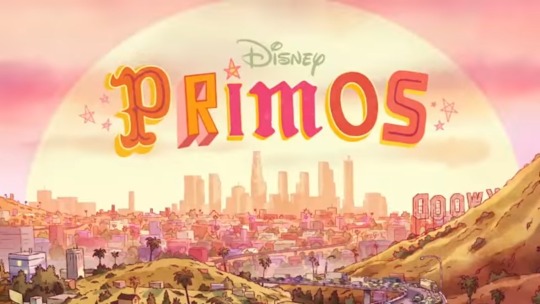
Yellow sky? Bare footed characters? Mostly a mess? Over exaggerating some of the Hispanic features. I saw the first episode, and it was just poorly written in general. And what mother calls their son "cochinada." Roughly translates to dirty or trash.
What's good Latino/Hispanic representation?
Colombian 🇨🇴
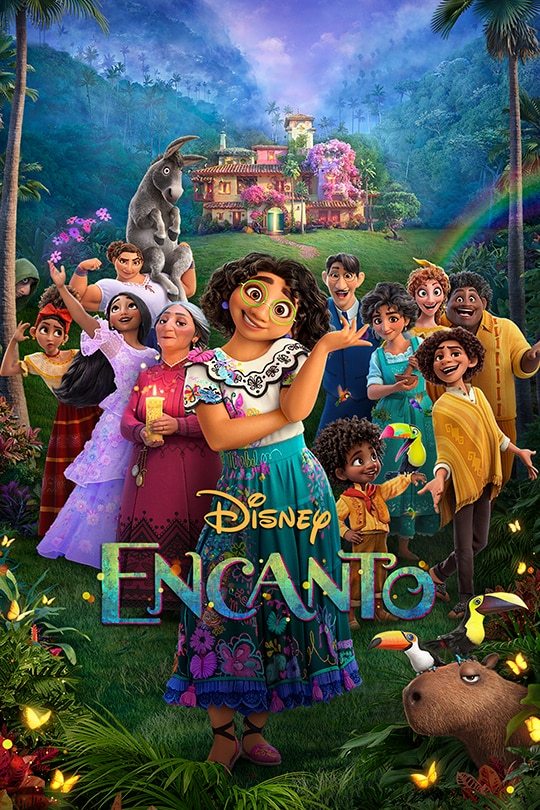
In the Caribbean region of Colombia, they light up candles and lanterns on December 8, before sunrise. So the candle giving them magic was a wonderful detail. Generational trauma is a thing for us Latinos, and this film handled it in a healthy and matuer manner. And I love how they didn't shy away with how Spaniards attacked and colonized latin lands.
Mexicans 🇲🇽
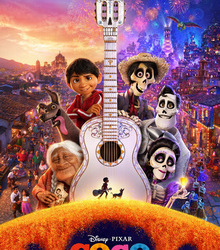
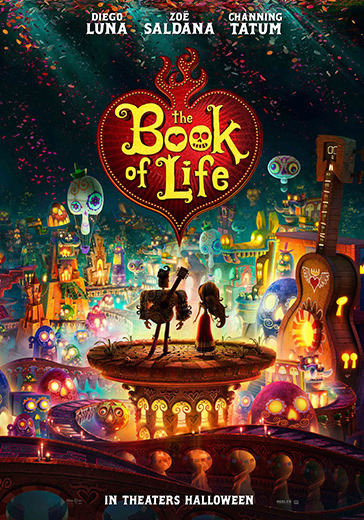

Yes, us Mexicans love death. 🤣 But hey, I was always taught to respect death, La Muerte, and our ancestors. So, it makes sense that many Mexican films talk about death. But I also like that Maya and the Three have Aztec, Mayan, and Incan mythology. Natives to Mexico.
Dominican Puerto Rican 🇩🇴🇵🇷

Luz mom is Dominican, and Luz dad is Puerto Rican. I appreciate a good interracial couple and a mixed child. Luz name also translates to light, and some Latinos are known for doing witch craft. Or at least knowledgeable about witches and demons, and no, we aren't evil. We just know how to handle this stuff. Plus, the owl has many meanings in Latino culture. To some, I believe the owl is a messenger of death and is telling everyone that death/danger is near.
Afro Latino. Puerto Rican 🇵🇷
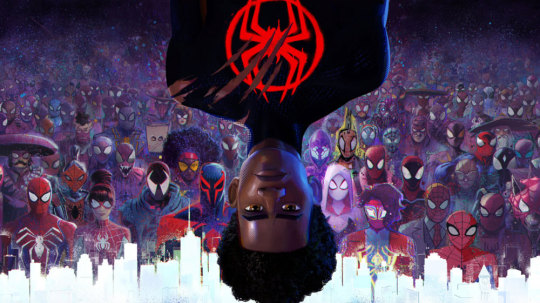
I am a massive sucker for interracial couples and mixed kids because of this. I was working at a hispanic store as a cashier. This woman walks past me and starts talking to the bagger. The bagger has blond hair, blue eyes, and white skin. The bagger looks at me worried because she doesn't speak English. So brown skin, black hair, me has to tell the bagger that the lady wanted ice in Spanish. I then talked to the lady in English. Her reaction? "YOU SPEAK ENGLISH!" Same for a dark skinned man. So many people skip me and talk to him in English. He's Dominican, and he only spoke Spanish. I appreciate films that show Latinos in different skin types and features. We're not all brown. So yeah, the mass diversity in this film is just beautiful. And I love how they wrote Miles relationship with his parents. Realistic conflict and healthy communication. Not falling into toxic stereotypes.
Spainard Puss 🇪🇸 Mexican Kitty & Perrito 🇲🇽
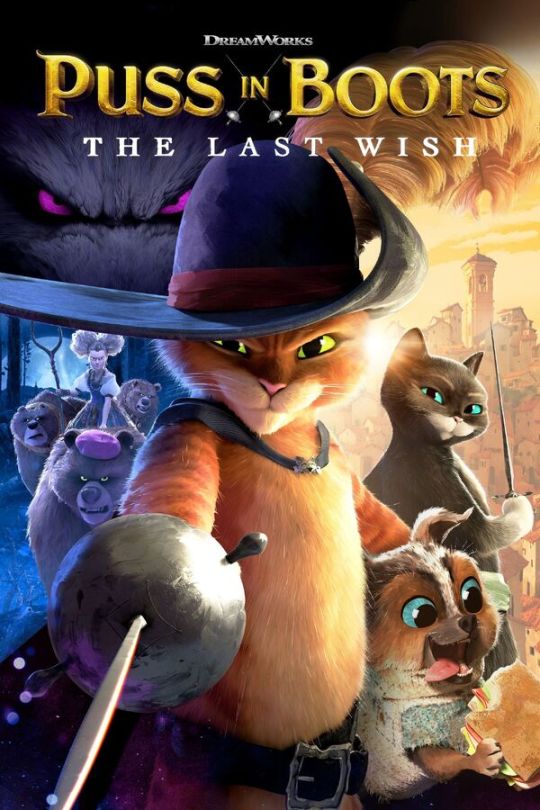
Spaniards are considered Hispanic but not Latinos like Mexicans. And again, interracial couples for the win. And I love the realism in their romance that heals through healthy therapy. Many people see Mexicans as toxic, so having Perrito as a therapist and the one helping everyone emotionally, it's nice. Not every Mexican is toxic. And I love how you can tell their Spanish and Mexican even though their animals. Puss Spanish accent, Spanish actor, him being a ginger like some Spaniards, flamingo dancing, and gazpacho. Kitty, Mexican accent, Mexican actress, black fur/hair like most Mexicans, quinceañera, and I love how they gave her a luchador mask. Something that originates from Mexico. Also, my brother and I joke how we as Mexiacns can't swim and Kitty nearky drowns in the 1st film. 🤣 Perrito, he's a chihuahua with a Mexican actor. Enough said. I also want to say death is Brazilian because of his actor.
I don't know much about Spanish culture, but someone said the wishing star has a connection to Spanish culture. Is that true? If so, COOL! Because death is connected to Mexican culture. So, Dreamworks finding a way to combine Spanish and Mexican culture in one film is 100% magical.
There are many more, like Beverly Hills Chihuahua 🇲🇽. 🤣 That film is better than Primos. Emperor's New Groove, Peru 🇵🇪, and Rio, Brazil 🇧🇷. Not Hispanic but Latino culture. But this post is getting long. Primos! A huge step down in Latino/Hispanic representation. Especially since we have so many good films and shows that have proper representation.
#primos#encanto#maya and the three#maya and the 3#coco#book of life#the owl house#toh#owl house#puss in boots#puss in boots the last wish#spiderman across the spiderverse#spider man: into the spider verse#into the spider verse#spiderman: into the spiderverse#spiderman into the spiderverse#spiderman#spider man across the spider verse#across the spiderverse
474 notes
·
View notes
Text

"A Florida court has ordered Chiquita Brands International to pay $38m to the families of eight Colombian men murdered by a paramilitary death squad, after the US banana giant was shown to have financed the terrorist organisation from 1997 to 2004.
The landmark ruling late on Monday came after 17 years of legal efforts and is the first time that the fruit multinational has paid out compensation to Colombian victims, opening the way for thousands of others to seek restitution.
It also marks the first time a major US corporation has been held liable for such rights abuses in another country and could lead to a series of similar lawsuits involving rights violations across the world.
The civil cases were brought by the family members of trade unionists, banana workers and activists who were tortured, killed and disappeared by paramilitaries as they sought to control the vast banana-producing regions of Colombia."
63 notes
·
View notes
Text
"The jury’s decision reaffirms what we have long asserted: Chiquita knowingly financed the AUC, a designated terrorist organization, in pursuit of profit, despite the AUC’s egregious human rights abuses.
By providing over $1.7 million in illegal funding to the AUC from 1997 to 2004, Chiquita contributed to untold suffering and loss in the Colombian regions of Urabá and Magdalena, including the brutal murders of innocent civilians.
This historic verdict also means some of the victims and families who suffered as a direct result of Chiquita’s actions will finally be compensated."
#Chiquita#boycott chiquita#auc#terrorist organization#humanrights#abuse#colombian#Urabá#Magdalena#ausgov#politas#auspol#tasgov#taspol#australia#fuck neoliberals#neoliberal capitalism#anthony albanese#albanese government#class war#fuck the gop#fuck the idf#fuck the police#fuck the patriarchy#fuck the tories#fuck the system#eat the rich#eat the fucking rich#antiauthoritarian#anti capitalism
97 notes
·
View notes
Text
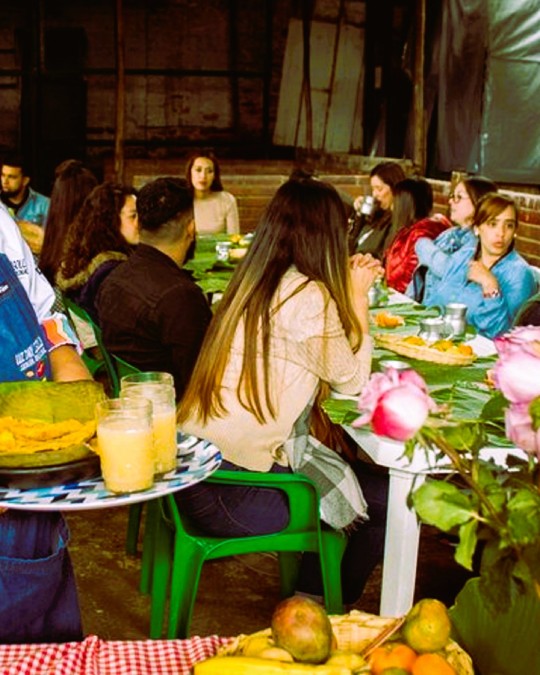
Food culture, Bogota, Colombia: Bogota’s food culture dates back to pre-Columbian times, when the region was inhabited by indigenous tribes such as the Muisca and the Chibcha. These tribes relied on farming and fishing for their sustenance and used locally available ingredients to create their meals. Corn, potatoes, quinoa, beans, and various types of meat, including guinea pig and llama, were staples in their diet. Many of these ingredients are still used today in traditional Colombian dishes, such as ajiaco soup and bandeja paisa... Bogotá is the capital and largest city of Colombia, and one of the largest cities in the world. Wikipedia
78 notes
·
View notes
Text
YR fanfic pet peeves (and corrections): latin america edition
so. i was originally going to post this in january as a kind of "new year, new opportunity to learn about simon's hispanic heritage" kind of a thing, but life got busy, and then my computer died and i lost my original list, so i've had to reconstruct this from memory as best as i could. there may be some stuff missing, so perhaps i'll just keep adding to this post as missing/new points come to mind.
disclaimer 1: if you've included any of the points made here on any fanfic of yours, please don't take this as a call-out. this isn't intended to shame anyone, but rather as an educational opportunity. it's very rare that a latin american nationality that is not mexican or colombian or puerto rican is showcased in an international show, especially outside of the US, and it's given me such joy to have all of you lovely folks make the effort to be open to and research and understand the idiosyncrasies of simon's (and omar's) heritage because the rest of latin america tends to go overlooked in most other fandoms. so i don't intend to scold anyone with this. we can't all know everything about every other culture-- lord knows i don't know everything about sweden, but i want to be respectful to the country and its people and that is why i heavily research anything i don't know and ask people who do know when my research doesn't quite cover it and am open to corrections when even that falls short. i expect most of you come to write about simon's family background in good faith and also want to be respectful to his family's culture, and so i thought i might make things a bit easier for you all by putting the most common errors/misunderstandings i've seen in one handy post. but once again, it's not a call-out, i don't get offended by these things, and i'm in no way implying, if you've done any of these things in fic or in life, that you are a bad person. i understand people make mistakes when they don't know things.
disclaimer 2: i am not venezuelan myself. i was born and raised in the same general region of latin america, though, and i have venezuelan friends and have worked with venezuelan people and have visited venezuela. generally speaking, i feel their culture is very similar to mine (though our spanish is much closer to spanglish than theirs is, haha xD) and feel a deep kinship with them. but of course, i'm no native, and if you're venezuelan and catch anything here that you feel is incorrect, feel free to point it out and i'll add a correction in your name.
warning: this is very long. christ almighty. DX if you can't make it to the end, tl;dr-- feel free to ask if you have any questions or if anything isn't clear. my ask box/messages are always open.
1- "mijo." this is the only one that legit has caused me to click out of several fics/chapters, at least in the beginning, but i've learned to grin and bear it by now. it's not so much that it's wrong, per se, but rather it's more of a location issue. "mijo" is, to my ears, very much a mexican (or, if you stretch it, northern triangle) slang. it IS used sparingly in other countries, but rarely used unironically. instead, if you hear the term used in the caribbean region of latin america (which my country is part of, as is a large part of venezuela), it's almost always used… let's say sarcastically. for example, if your grown-ass adult friend is being a dumbass and doing something reckless, you might call out "oiga, mijo, se va a romper el cuello" ("hey, mijo, you're going to break your neck"). basically, it's a way of calling someone immature like a child. it doesn't have to be ENTIRELY unaffectionate (kinda like the way someone might call their significant other "idiot" or "dummy" but mean it endearingly. in fact, in colombia it's way more common for spouses to call each other "mijo/a" than it is for them to call their children that), but you can also use it with complete strangers-- like if someone cuts sharply into your lane while you're driving, you might yell at them "oiga, mijo, a donde le enseñaron a manejar, en un potrero?!" ("hey, mijo, where did you learn how to drive, in a horse paddock?!"). but even in these sarcastic/neggy cases, it's rare. and EVEN RARER to hear a mother call her children "mijo" or "mija" in this region. it's just not a thing. so when i read it in fanfic, it immediately takes me out of the story because it's so weird to me that linda would sound mexican-- it's a very distinctive accent, which carmen gloria 1000000% does not have. (plus, "mijo" in spanish is a type of birdseed. so it gave me a chuckle the first few times i read it in a fic because i always have that brief second of confusion where i go "why is linda calling simon birdseed?" before it clicks. xD i'm a dork.) it's much more likely that linda would just say "hijo" or "mi hijo," instead.
1b- the way you decide on whether to use "hijo" or "mi hijo" is important because "mi hijo" can sound overly formal in the modern context especially, much like it would in english. in fact, you can use the english version of it, "son" vs "my son" to guide you on which of the two to use. like for example, if linda were to say directly to simon "i love you, my son," she would sound oddly old-timey and anachronistic, so you would just use "son" ("hijo") in that case. whereas if she's talking about simon with someone else, for example saying "i told my son to be here on time," you'd be perfectly okay to use "mi hijo" in that sentence in spanish. it's very transferable in that case.
2- speaking of non-transferable, though, you can't use "cariño" in all instances you would use "sweetheart" or "sweetie." it really depends on the grammatical construction, and it can be tricky to get it right, but it depends on whether you're using it as a direct address or as an object. for example, if you're using it in place of someone's name-- say, a mother telling her child "te quiero, cariño" ("i love you, sweetheart/sweetie") is perfectly fine, because in that case, she could also say "te quiero, hijo" ("i love you, son") or "te quiero, simon" ("i love you, simon"). but if, say, simon says to wille "you're my sweetheart," you would not use "cariño" there; you'd go instead with some syrupy way to say "boyfriend," like "eres mi novio" or "eres mi enamorado" or even "eres mi amor," and if sara tells felice "you're a sweetheart," that would also not involve "cariño" at all. in addition, "cariño" is also very rarely used in plural; if linda is using a term of endearment for both her kids, or for a group of teens her kids' age, she would use a different term of endearment altogether: "hola, mis amores" ("hi, my loves"), "hola, bebés" ("hi, babies") or "hola, mis tesoros" ("hi, my treasures") among some examples. one exception is when you say "cariños míos" ("my sweethearts"), but very rarely the plural by itself. in fact, "cariño" is often slang for gift or present, especially in the diminutive-- for example, if you go to someone's celebratory party for some occassion (birthdays, graduations, baby showers, heck even christmas), you might hand them a small gift and go "te traje un cariñito" ("i brought you a small present"), and if it's more than one gift, or you're bringing gifts for several people, then you'd say "unos cariños" or "unos cariñitos" in the plural.
3- simon's skin is tan, not tanned. this… doesn't personally bug me as much because it's more of an english grammar issue, but i know people who might actually feel very offended if you get this one wrong with respect to them. "tan" is a color; a light shade of brown. "tanned" implies the original color of your skin has darkened with the sun. now, i'm sure simon can tan (lucky goat, says she whose skin burns even while indoors), but about 95% of the time "tanned" is used in YR fanfiction, it's used as a descriptor of the color of simon's skin as we see it on the show. that would imply his skin used to be lighter at some indeterminate before-time and has been darkened by the sun. this is incorrect; that is the natural color of simon's skin. so stick to "tan skin" instead (not tan PERSON, mind you. his SKIN is tan, he is not). and i would gently suggest that if you take away any single thing from this post, make it ESPECIALLY this point, as someone more sensitive than me might interpret this error as some kind of retroactive whitewashing. and i don't want anyone here to get in trouble for simply not knowing.
4- pabellón criollo is one dish, yes, but it's four different FOODS. it's not something a newbie would be able to make off of a recipe (i don't know how to make it and i've been eating it all my life), and it's not something that's likely to be taught in just one day. also, if you're bringing it to a dinner or a potluck, you're bringing four separate food containers, not just one.
4b- also, venezuelan food, for the most part, is not particularly spicy. you CAN make it spicy if you want, but traditionally, it is not. it's flavorful, maybe even saucy depending on the dish, but rarely spicy. i know the joke of white people being unable to handle spice is funny, but there's also plenty of us hispanic people who are equally terrible at it, because there's different levels of spice in the food from different regions of latin america. besides, as a friend of mine perfectly put: we are living in the 21st century now. if you can eat mild mexican food, you should be able to handle traditional venezuelan food just fine. and i'm pretty sure there's mexican food in sweden. plus, wille would probably be more used to international food-- not only does he have the means, but having traditional meals in foreign countries is kind of part of the job.
5- while i'm at it: simon is definitely half venezuelan. this is canon as of S2. there is no other place in the world where that dish is called pabellón. please keep that in mind when you're writing and researching.
5b- this, along with several of the points above, is important because it's a bit of diaspora trauma that whenever we venture outside of latin america and people learn we're latino, they immediately assume we're mexican, or that our culture and traditions are the same as those of mexican people. it happens often, and it's incredibly annoying. not that there's anything wrong with mexico or mexican people-- they're lovely, and their traditions and culture and food are fantastic-- but we are not them, and treating us like we are is reductive. the rest of latin america can be very different and incredibly diverse, and it can be dispiriting when people treat us like we're all the same. so that is why it is important when writing about simon, his family or his venezuelan roots, that you take care to actually research things as they are in venezuela, and not just pick the low-hanging fruit of latino facts you might've learned through pop cultural osmosis, which eight times out of ten will be mexican-only because most hispanic people in the US are mexican and the US exports its media all over the world. i've learned to just roll my eyes at it by now, but some people might actually feel offended or hurt, and i'm sure nobody here intends for that to happen.
6- although simon speaks spanish, neither he nor sara nor his mother nor any aspect of his mother's culture is spanish. "spanish" is what people from spain call themselves. people from spanish-speaking latin american countries are not spanish; we are hispanic, or latino/a/e. "latinx" is… let's call it controversial, at least outside of the US. most people born and raised in latin america don't like it; i personally don't get offended if people use it, but i don't use the term myself. also, you can say "latin food" or "latin music," but we usually don't refer to PEOPLE as latin, but rather latino/a/e. if in doubt, just use latin american or hispanic. they're also conveniently gender neutral.
EDIT: @andthatisnotfake also brought up a very important point: "if you spell it latinx, it makes it harder for screen readers to read (or so I've been told) and some people depend on those, so there's another reason to avoid it." (the unpronounceability of that term is at least part of the reason why hispanic people who live in latin america don't like it.)
6b- never use "the latino/a" on its own to refer to people. "latino/a/e" is an adjective, not a noun, so you would say "the latino boy" or "the latino man" but never just "the latino." kinda like it would be weird to point out the one japanese man in a room as "the japanese." there are some nationality/ethnic terms that just don't work as nouns in english.
7- spanish is not simon's one native language-- or at least not any more than swedish is. he grew up in a mixed-race household, speaking two different languages. it's pointless to call spanish his native language when comparing it to swedish. both are his native languages. also, while we're at this, wille is probably at least bilingual (i'm assuming he can speak at least english), although he only has one native language. it's hardly a competition between the two boys as to who's more of a polyglot.
7b- simon wouldn't take classes on the spanish language-- like to learn how to SPEAK the language-- since spanish is one of his native languages. he wouldn't take them at hillerska, nor in university, nor elsewhere. he wouldn't be allowed. you're literally not allowed to take classes on your native language, nor get credit for said classes. trust me, those would've been an easy extra 24 credits for me in college if that was a thing.
EDIT: have been made aware (thanks, @rightsogetthis and @plantbasedfish!) that at least in sweden and in finland one IS allowed to take classes of your non-swedish/finnish native language, in certain circumstances. i have to say, i'd be pissed if i were taking my french classes alongside a french native speaker, but hey, the system's the system, i guess. ;) so i've struck this one out.
8- dear god please don't use google translate for your spanish translations. listen, i'm not judging-- i do it with other languages, too, when i'm in a pinch. but google translate is literally The Worst (tm) so i always try to either check with someone, or stick to the stuff i already know is correct. seriously, you don't want to know the kinds of crazy stuff GT can spit out that people actually put out in the real world; some of them are quite hilarious. if you're unsure, my ask box/messages are always open and i looooove helping people with this kind of thing, hispanic language and cultural stuff. i know it seems like i'm hardly around, but i do check my messages. don't be shy, even if it's something really small.
PS: while i'm talking pet peeves, malin is wille's bodyguard, not his butler. she's nice enough to attend to him at hillerska because there's no other palace staff around and she's literally stationed outside his door, but she wouldn't do that in the actual palace. there's other staff for that. she wouldn't even guard him at the palace, i don't think, because the royal palaces in sweden are guarded by the royal guard, not SÄPO. if anything, malin might spend the time while wille is in the palace grounds at a gatehouse (like in YR 2x03 and onwards) or at some kind of security office in the palace, and then get called whenever wille needs to go anywhere. she wouldn't be giving wille messages from the queen or walking guests to wille's room or anything like that. that's not her job. (sorry, i had to get that off my chest, lol.)
#young royals#young royals netflix#netflix#simon eriksson#sara eriksson#linda eriksson#omar rudberg#carmen gloria perez#latin america#latino#hispanic#latin american culture#latin culture#latino culture#hispanic culture#spanish language#i hope this is helpful#if not feel free to ignore lol
256 notes
·
View notes
Note
Recently there been a controversy with a game called Genshin Imapct with a region called Nathan's that is inspired by Pre Colombian Latin American civilizations, some Afrcian, Hispanic, and Aboriginal Australian cultures. And just recently they revealed their characters.

Mavuika and another character named Ororon.
Mavuika (sun glasses woman) is inspired by Mahuika a Maori fire goddes who is known to have a Moko on her chin




This is Ororon from Genshin

He inspired by Olorun an Orisha from Yoruba Tradition


This is also Olorun from Smite


Some are saying it's because of the censorship in China as stated in this post.
However there are two company's that have dark skin characters in their game and they arent being censored; Riot Games who created League of Legends and Valorant and Lilith Games who have created the AFK games and Dislyte (a game inspired by mythology gods and beings)
You can't scream anymore anti blackness and colorism than this!
The post you linked started off incredibly racist regardless of the context lmao. "Don't scream racism because you can't find a character with a skin colour like yours" then don't pull from YORUBA GODS, FROM NIGERIA! Like this isn't like Greek and Roman mythology, where we all fucking know who those people are thanks to the emphasis of these mythologies in a White Western-ran Classics field and in a white supremacist society that deems them worthy of a white connection. I could walk past 2000 white Americans and I can guarantee 1990 of them won't even know what an Orisha is 🙄
I'm sorry but I do not feel like sacrificing any more of my mental health reading further, that first bit pissed me off so bad ik I'm just gonna make myself angrier reading. Yeah it's textbook racism. This is a fictional world with magic and fairies and shit, so i get we're not worried about "geographic accuracy". But what would have been the issue with leaving them looking like the gods they were inspired by, if the island is supposed to be influenced by those real world religions? There wasn't enough skinny pale people in the game lmao?
This is also another one of those examples of how nonblack people of color really irritate me when it comes to solidarity. Because why are you caping so hard for whitewashing. 🙄
47 notes
·
View notes
Note
do you think the lamb stew kabru mentioned could be some variation of rogan josh?
omg anon I'm so sorry, you sent this message just when my life was going completely insane (tree fell on house, living in a hotel, etc), and I wanted to answer you but I just didn't have time... So I forgot.
And then another anon (or maybe it's still you!) sent me another, similar ask!

Which reminded me that I needed to answer you-- and now them, too!!
Food is not an area of expertise for me, so I had to look up all of these dishes. I'd heard the term "gorkhali" before, and heard of rogan josh, but that's as far as my knowledge went.
Let's talk about what we know about where Kabru comes from and what foods he likes, the food culture of South Asia in the real world, and then we can discuss if any of these dishes might be Kabru's childhood lamb stew!
I've written about the real world cultural references Kui has made with Kabru's character before. Evidence that Kabru is from a fantasy version of South Asia (India/Nepal), and Where exactly in fantasy South Asia is Kabru possibly from?
Two additional data points that suggest Kabru could be from a fantasy version of South Asia are his love of tomatoes, and mutton stew being an important dish from his childhood. What does that mean?
THE CULTURAL OVERLAP BETWEEN INDIA, NEPAL AND TIBET
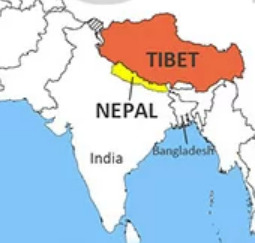
An important thing to note while discussing the cultures of this region is that all three modern countries have a lot of cultural overlap. So many of the foods eaten in one country are also eaten in the other two, with minor variations.
I'm attempting to generalize and speak broadly as best I can, but I am not an expert, so I apologize for any errors on my part. Sometimes finding English-language information on these topics is challenging.
The cuisine of Nepal is a mix of Nepal's own unique culture, plus the influence of its neighbors, India and Tibet.
The Nepali diet primarily consists of rice, wheat, corn, lentils coupled with fresh vegetables and meats. A typical Nepali every-day meal can be characterized by Dal (lentil soups), Bhat (steamed rice) and Tarkari (vegetables), also known as "The Trinity", supplemented by some meat.
STEW OR CURRY?
Though many people think of them as two distinct things, curries are a type of stew, so I think it's valid to look at both stews and curries when trying to identify Kabru's childhood stew.
TOMATOES IN THE CUISINE OF THE INDIAN SUBCONTINENT
Tomatoes turn up in dishes all over the Indian subcontinent, but they are not a traditional ingredient in the local cuisine. Europeans introduced New World foods like chilies, potato and tomato to the region in the 16th century, at which point they were added to the food culture, and in many cases the modern version of these recipes has completely eclipsed the traditional one, both on the Indian subcontinent and abroad.
But while potatoes and chilies were adopted almost immediately, the tomato did not catch on until centuries later, in the 1860s, and they did not become a widespread part of the local culture until the 1960s.
Because of this, the popular global idea of food from the Indian subcontinent often has tomatoes in it, while traditional recipes do not... And this is interesting because Kui tells us Kabru's favorite food is tomatoes! I'm guessing she chose tomatoes because of how common they are in modern Indian food.
Did Kui not know that tomatoes aren't a native part of the cuisine of the Indian subcontinent? It's possible her research didn't go that deep and she just assumed the modern food isn't that different from ancient food.
It's also possible that Kui knew that tomatoes aren't native to the Indian subcontinent, but that Dungeon Meshi has already experienced their version of the Colombian Exchange, because the east and west have had extensive contact with each other for (probably) thousands of years, so then the use of tomatoes in the West (where Kabru is from) would make sense, and doesn't need any further explanation.
MUTTON IN THE INDIAN SUBCONTINENT
Mutton (the term for goat, sheep or lamb meat) is the most consumed red meat in the Indian subcontinent. Goat is the most popular, most likely because it is the cheapest out of the three.
MUTTON IN NEPAL
Like in the rest of the subcontinent, mutton is very popular in Nepal. It is considered a major delicacy, and goat stew/curry is often eaten by Nepali families during important holidays, and for many Nepalis, goat stew/curry is associated with big family gatherings, similar to how Americans think of eating turkey for Thanksgiving, or ham for Easter.
Let's talk about some of the dishes anon(s) asked me about!
ROGAN JOSH
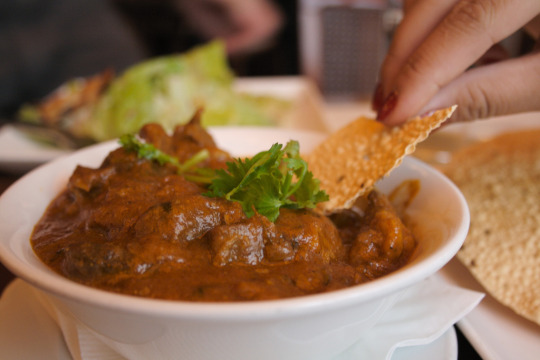
Rogan josh is an aromatic curried meat dish originating from Kashmir. It is made with red meat—traditionally mutton—and colored and flavored primarily by alkanet flower (or root) and Kashmiri chilies. It is one of the signature recipes of Kashmiri cuisine.
A number of origins/meanings of the name have been suggested, such as "stewed in ghee" or "red meat/red juice."
Its characteristic deep red color traditionally comes from dried flowers or root of Alkanna tinctoria (ratan jot) and from liberal amounts of dried, deseeded Kashmiri chilies (lal mirch).
Many modern interpretations of this dish add tomatoes to the sauce. This is especially common with ready-made pour-over cooking sauces to the point that Rogan josh is often described in the modern day as a tomato-based dish.
GORKHALI LAMB

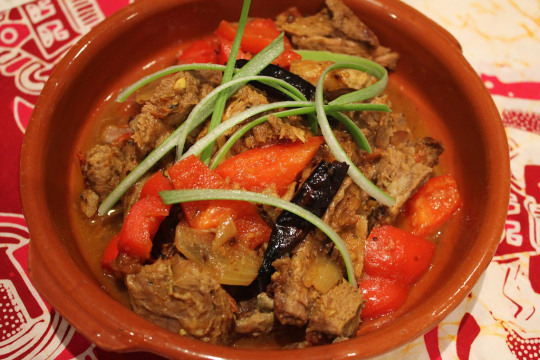
The word Gorkhali (गोर्खाली) is historically synonymous with "Nepali," so Gorkhali lamb could also be called Nepali lamb. The name change, from Gorkhali to Nepali, occurred in the 1930s.
(In the modern day, Gorkha is usually used to refer specifically to military units in the British or Indian army that were made up of men from the North Indian/Nepal region. Starting in 1816 the British East India Company frequently recruited these men as mercenaries, and over time the Gorkhas became very distinguished as exceptional soldiers.)
I couldn't find much about Gorkhali lamb aside from recipes, most of which just echoed the same information, and many of them didn't seem to come from very authentic sources.
From what I've been able to piece together, you make Gorkhali lamb by marinating lamb meat (usually meat on the bone) and cooking it over a charcoal grill. Once it's done, you coat the grilled lamb with a sauce made with chilies and tomatoes, and serve with rice or roti.
I'm not an expert, but it seems like Gorkhali lamb isn't a stew or a curry, it's a sort of marinated, grilled lamb with a sauce. If someone knows more about Gorkhali lamb, please let me know!
Like the Rogan Josh, the addition of tomatoes is a modern invention.
THUKPA
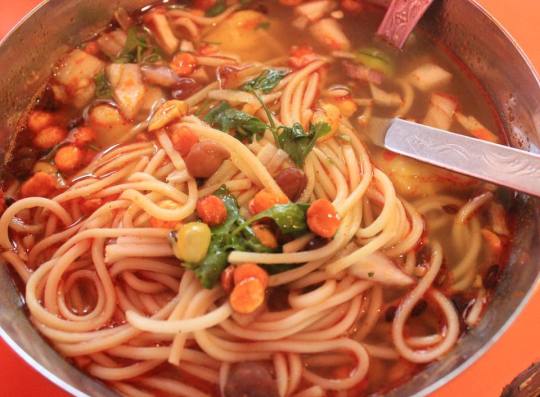
Thukpa is the Tibetan word for any soup or stew with noodles. Thukpa can be prepared in both vegetarian and non-vegetarian variations; the most popular non-vegetarian variation includes chicken, but it is sometimes made with mutton as well.
The Nepalese version of Thukpa is predominant vegetarian, and has a spicier flavor. The protein ingredients are replaced with vegetarian alternatives such as various types of bean.
However, non-vegetarian thukpa is also enjoyed in Nepal, and egg thukpa is probably the second most popular type.
Thukpa is made like most other noodle soups. Some modern recipes include tomatoes in the soup paste, most likely a modern addition.
INDIAN MUTTON CURRIES
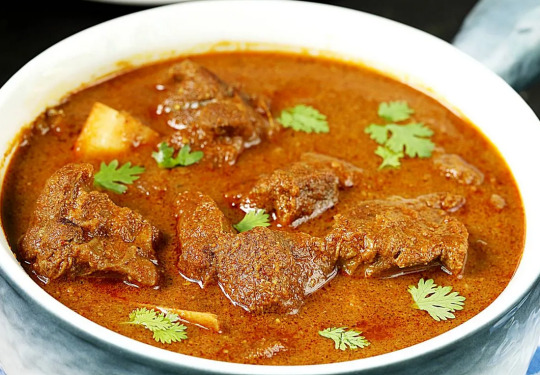
There's many different variations of mutton curry (Kosha mangsho, Mansa kasa, Tapelu, Rezala etc.) throughout the entire Indian subcontinent. Some recipes include tomato, some don't, and as with everything else in this post, the tomatos are a modern addition.
NEPALI MUTTON CURRY
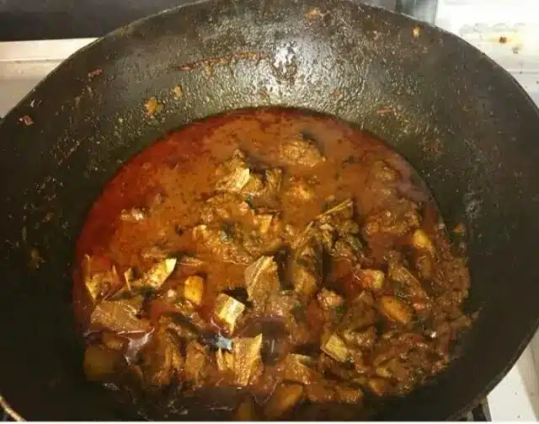
As I said before, mutton is incredibly popular in Nepal. It's reserved for special occasions and celebrations, like Dashain, Nepal's biggest festival. There are many different types of stew and curry in Nepal that feature mutton, and mutton is a popular meat to use in momos or fried rice as well.
SO WHAT IS KABRU'S GOAT STEW?
Unfortunately we still don't have enough information to give a definitive answer.
However, I would say that thukpa and Gorkhali lamb can both be ruled out, since noodles are the core of thukpa and Kabru doesn't mention that his stew is missing noodles. Meanwhile Gorkhali lamb doesn't seem to be a proper stew.
So then what we have left is Rogan josh, and Indian or Nepali mutton curries. Based on all the little tidbits we know, I'd be inclined to assume Kabru's stew is one of these Nepali curries, since they are so iconic of Nepali cuisine and are a big part of the local culture, and that seems to match what Kui tells us in the manga - that this food is a cherished childhood memory.
I've sprinkled some links throughout this post, but you can read more about Nepali mutton curry, and other Nepali food at all of these sites:
https://nepalicooking.tripod.com/lamb.htm
https://www.buzzfeed.com/anupkaphle/here-we-goat-again
https://www.buzzfeed.com/anupkaphle/keep-calm-and-curry-on
https://www.foodpleasureandhealth.com/nepali-style-goat-pakku/
MUSHROOM POSTSCRIPT: I have seen some people get confused by the goat stew page in the manga. They think that when Kabru says "my mother used to make this stew for me" he is talking about Milsiril, the elven woman who took care of him after his birth mother was killed.
Though we do not know 100% for certain, I think this is an objectively incorrect reading of the text. I may make a more comprehensive post about this another time, but:



Kabru says he ate this stew as a child, that he hasn't had it in a long time, and that he's looking forward to having it again. He says he is relying on childhood memories in order to make the stew.
If this stew is something Milsiril made for him, why did she stop making it? Why hasn't Kabru had it in a long time? Was there a goat blight for the last 10 years? Did she stop making it to punish Kabru for wanting to leave her? This seems like important information Kui would have told us.
The much more logical assumption is that Kabru's birth mother, who died when he was 7, is the one that made lamb stew, and that's why Kabru hasn't had it in a long time, struggles to remember how to make it, and also why he's so excited to eat it.
This is in direct contrast with the elf fruit cake that Milsiril forced Kabru to eat as a child. Kabru's birth mother made him something he loves, that he is eager to eat again, while Milsiril forced him to eat elf cake so often that it has become his most disliked food.
Kabru and Ryoko Kui never refer to Milsiril as Kabru's mother, the phrase “foster parent” (養母 or 育ての親が, lit. meaning “parent who raised me” in contrast with a birth/blood parent) is used instead in both the manga itself and in the World Guide.
There are several other things like this (how Kabru talks about Milsiril) which I think makes it clear that Kabru probably doesn't call Milsiril mother willingly, and that he goes out of his way to put distance between her and himself. He doesn't hate her, but he doesn't want her to be a part of his life.
Milsiril is a wealthy noble in a society where women are equal to men. It's unlikely that she personally does much cooking, and even if she does cook as a hobby, it's unlikely that Kabru watched her butcher a goat - servants or the butcher would prepare the meat for her.
Milsiril is a fussy eater, and hates most foods. Goat tends to have a strong flavor and is sometimes gamey. I don't think she'd eat goat... Meanwhile, as I stated previously, goat is a delicacy in Nepal, so it would make perfect sense for goat to be a special treat Kabru grew up eating.
Yes, Milsiril sometimes does things she doesn't want to do because Kabru asks... But both examples we have of this, she tries to turn it into a punishment. She explicitly says she's training Kabru so that he'll give up, not because she wants him to get strong and succeed. She wants him to fail. She takes him to her family reunion to prove to Kabru that it's unpleasant, so he won't want to go again. Both times this tactic doesn't work, but she clearly states that this is her intent.
I could go on about this for hours, but this post is really about goat stew!!! But just wanted to throw that in there in case anybody is confused about who exactly cooked goat stew for Kabru.
As I said, there's always the possibility that I'm wrong, but I think the evidence is pretty overwhelming that when Kabru says "my mother cooked this for me" he isn't talking about Milsiril.
#dungeon meshi#delicious in dungeon#kabru#dunmeshi#talking mushroom#dungeon meshi research#kabru of utaya#kabru dungeon meshi#analysis#The Essay#Dungeon Meshi Research
37 notes
·
View notes